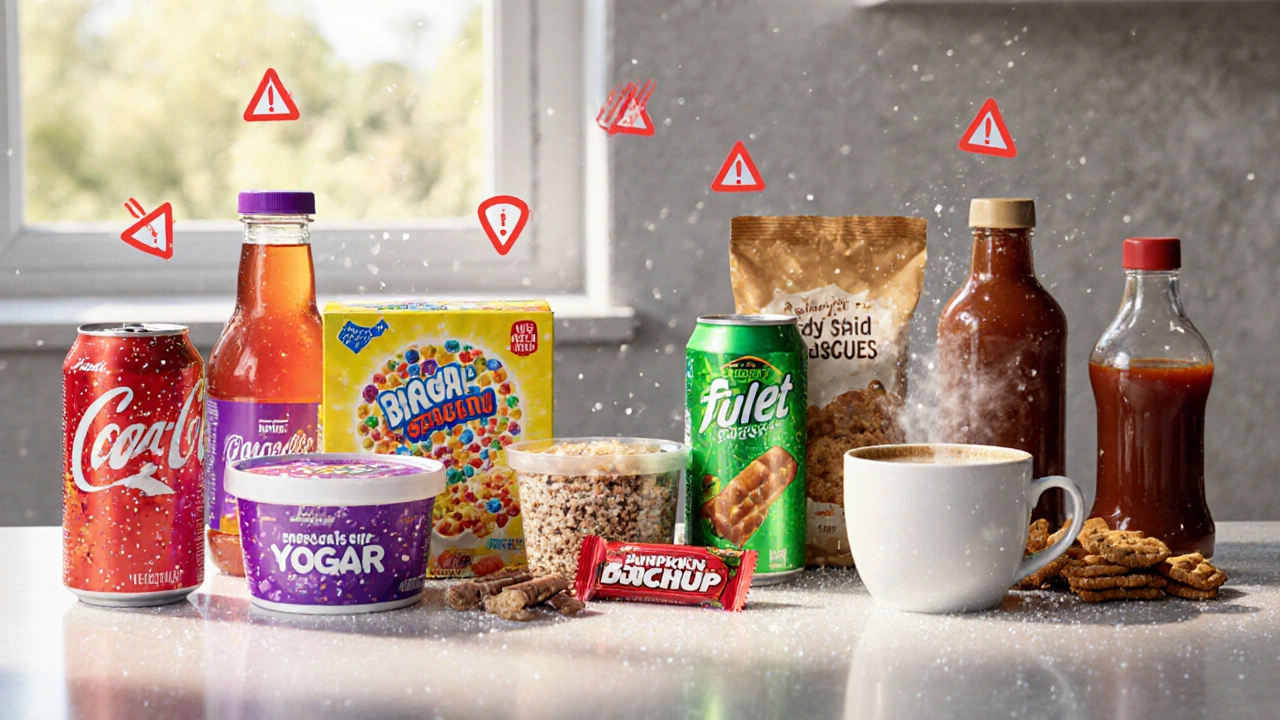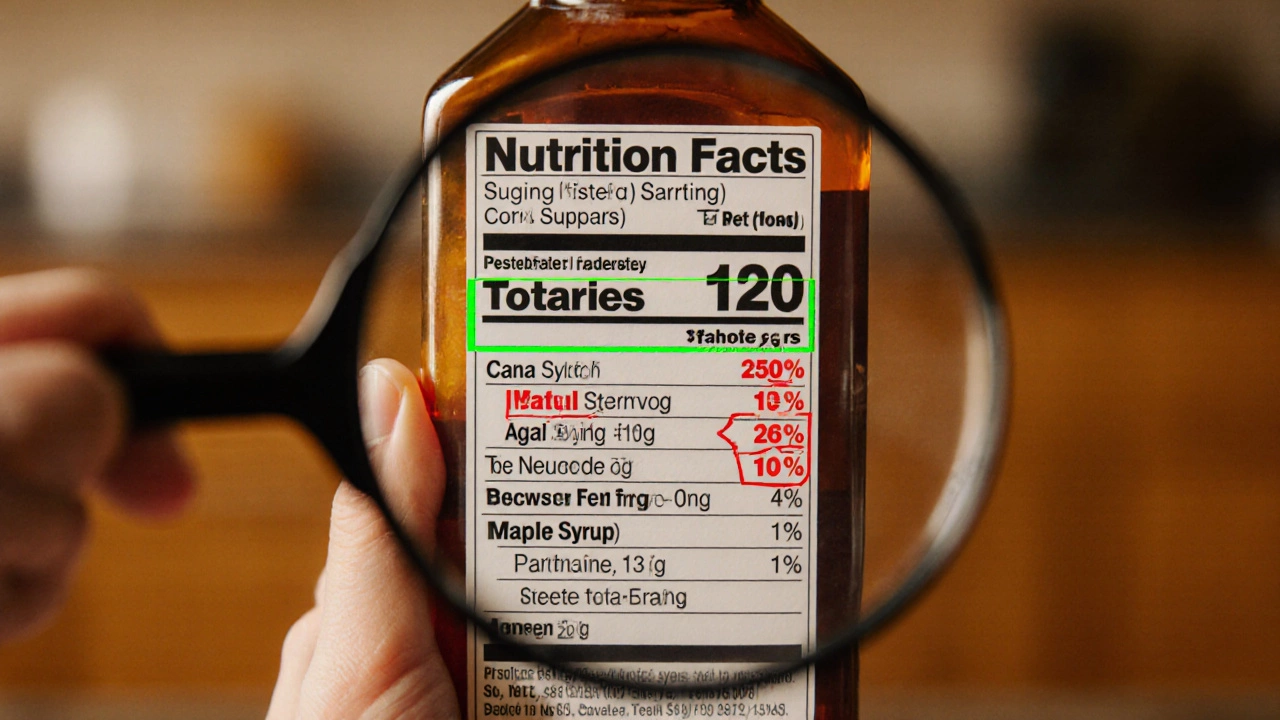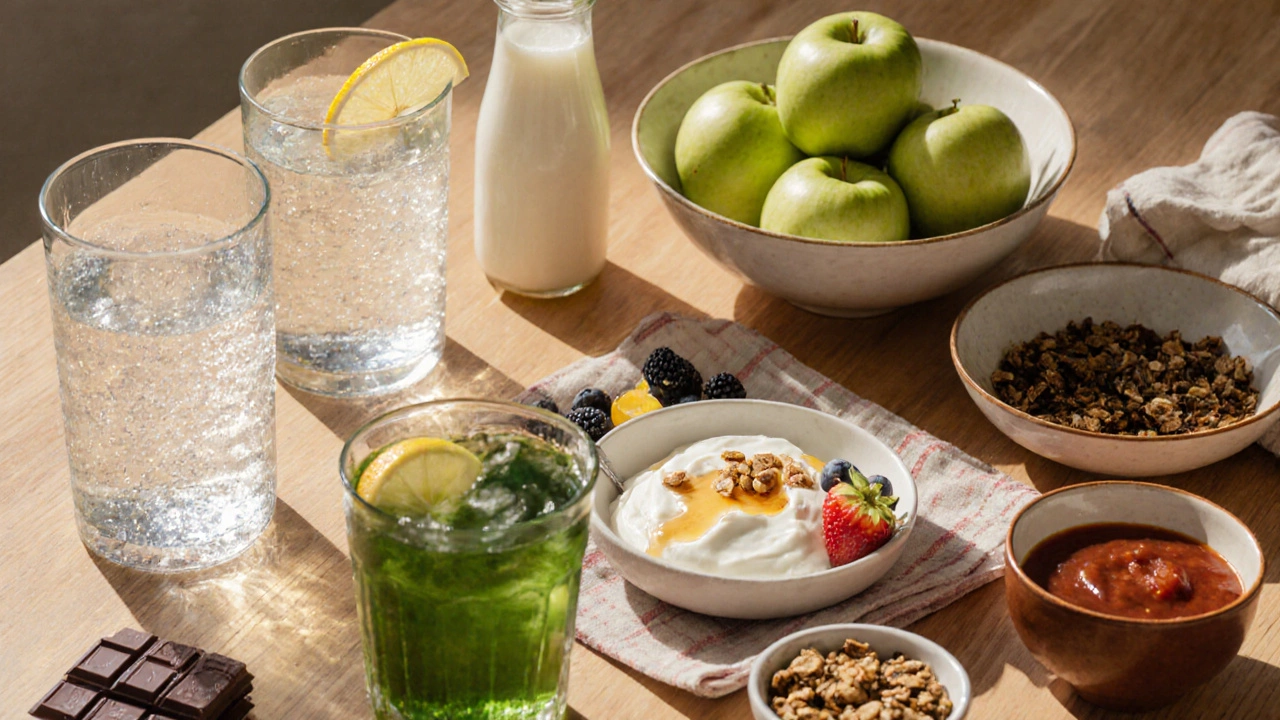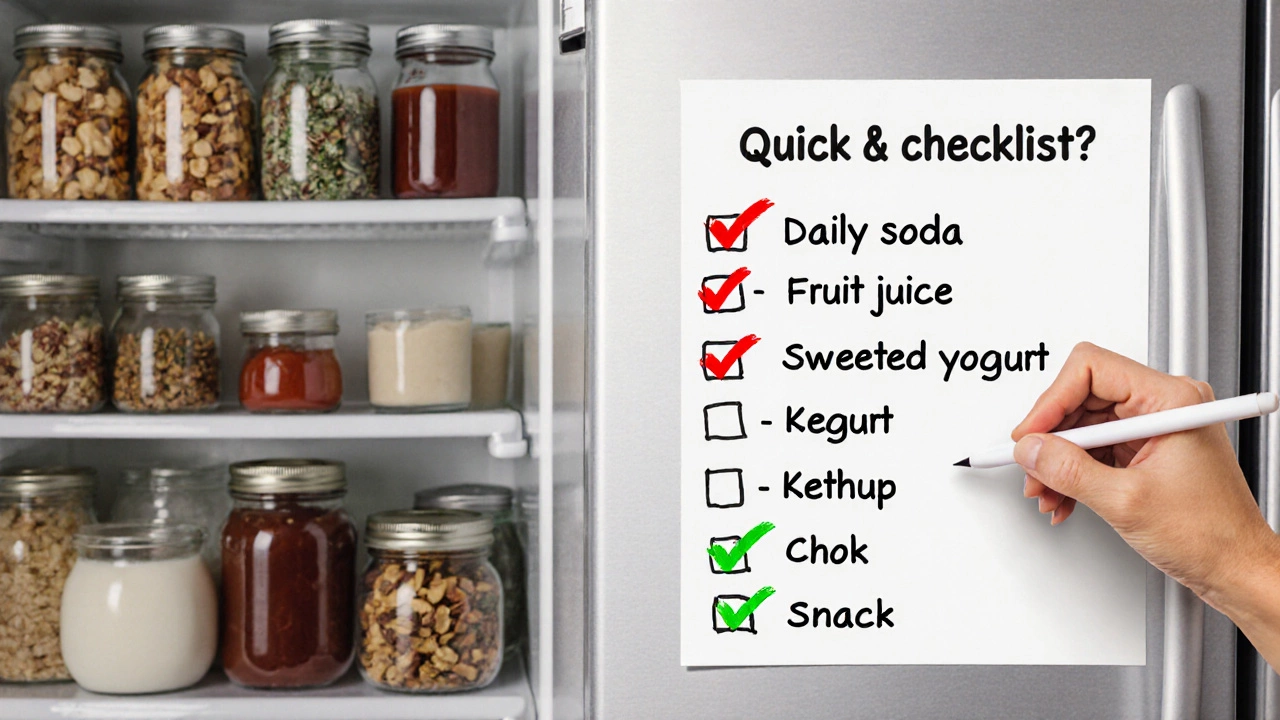Top Foods to Skip for a Low‑Sugar Diet
 Oct, 11 2025
Oct, 11 2025
Sugar Intake Calculator
Calculate Your Daily Sugar Intake
Estimate your daily added sugar consumption from common high-sugar foods. Based on WHO recommendations, aim for less than 25g per day.
Key Takeaways
- Most added sugar hides in processed drinks, sweetened dairy, and packaged snacks.
- Reading nutrition labels is the fastest way to spot hidden sugars.
- Swap soda, fruit juice, and flavored coffee with water, whole fruit, and unsweetened drinks.
- Choose whole‑grain cereals, plain yogurt, and natural sauces to cut sugar dramatically.
- Keep a simple checklist to stay aware of sugary traps in everyday meals.
Why Cutting Added Sugar Matters
Added sugar isn’t just extra calories - it spikes insulin, fuels inflammation, and can speed up the onset of type2 diabetes, heart disease, and dental decay. The World Health Organization still recommends that free sugars make up less than 10% of daily energy, and ideally under 5% for optimal health. For a 2,000‑calorie diet, that’s roughly 25grams (about 6teaspoons) of added sugar per day. Most people exceed that limit without realizing it, simply because sugar hides behind pleasant flavors and bright packaging.

Hidden Sources of Added Sugar
When you think "sugar," you might picture a candy bar, but the real culprits are often less obvious. Below are the most common foods where added sugar sneaks in, each marked up with schema.org microdata for easy reference.
Soda is a carbonated beverage that typically contains 8-12grams of added sugar per 100ml, amounting to 30-40grams in a standard can.
Fruit juice may seem healthy, but many store‑bought varieties are sweetened beyond the natural fruit sugars, delivering 9-11grams of added sugar per 100ml.
Sweetened yogurt often contains flavored syrups, adding 12-15grams of sugar per 150‑gram serving.
Breakfast cereal marketed for adults can pack 10-14grams of added sugar per 30‑gram portion.
Energy drink provides a caffeine kick and a sugar surge - roughly 13grams per 250‑ml can.
Candy is an obvious source, ranging from 20 to 30grams of added sugar per 40‑gram bar.
Processed snack such as flavored crackers or cheese sticks often include a sugary coating or seasoning, adding 4-6grams per serving.
Flavored coffee drink (e.g., pumpkin spice latte) can hide 15-20grams of sugar in a 350‑ml cup.
Ketchup and other condiments may seem harmless, yet a tablespoon can contain 4grams of added sugar.
Barbecue sauce often adds 8-12grams of sugar per 30‑ml serving.
How to Spot Added Sugar on Labels
- Check the ingredient list. Look for any of these terms: sugar, high‑fructose corn syrup, cane syrup, agave nectar, maltose, dextrose, fruit juice concentrate, honey, maple syrup.
- Identify sweeteners that appear near the top - the earlier they are, the larger the amount.
- Read the ‘Total Sugars’ line on the nutrition facts table. If it’s a high‑sugar product, the number will be 10grams or more per serving.
- Beware of “low‑fat” or “diet” claims - manufacturers often replace fat with sugar to preserve taste.
- Use the % Daily Value (DV) as a guide; more than 15% DV for added sugars per serving signals a high‑sugar item.

Healthier Swaps for Everyday Meals
Switching out high‑sugar items doesn’t have to feel like a punishment. Below is a quick substitution list that keeps flavor while slashing sugar.
- Replace soda with sparkling water flavored with a splash of lemon or cucumber.
- Choose whole fruit (apple, berries) instead of fruit juice - the fiber slows sugar absorption.
- Opt for plain Greek yogurt and add fresh berries or a drizzle of honey (use sparingly).
- Select unsweetened oat or almond milk for cereals, and pair with low‑sugar granola.
- Swap energy drinks for iced green tea with a squeeze of citrus.
- Enjoy dark chocolate (70%+ cacao) instead of candy; it satisfies cravings with far less sugar.
- Snack on raw nuts or roasted chickpeas rather than sugary crackers.
- Make coffee at home with unsweetened almond milk and a dash of cinnamon.
- Whip up a simple vinaigrette (olive oil, mustard, vinegar) instead of ketchup on burgers.
- Blend homemade barbecue sauce using tomato paste, apple cider vinegar, and spices - control the sweetener.
Quick Checklist: Are You Eating Too Much Sugar?
- Do you drink at least one soda or flavored coffee per day?
- Do you reach for fruit juice, sweetened tea, or sports drinks regularly?
- Is your breakfast cereal labeled “low‑fat” or “high‑protein” but also “sweetened”?
- Do you add ketchup, BBQ sauce, or honey to meals without measuring?
- Are you frequently snacking on flavored crackers, granola bars, or candy?
If you answered “yes” to more than two, it’s time to audit the pantry and replace hidden sugars with the swaps listed above.

Comparison Table: High‑Sugar Foods vs. Low‑Sugar Alternatives
| Category | Typical Added Sugar (g per serving) | Low‑Sugar Alternative | Added Sugar (g per serving) |
|---|---|---|---|
| Soda | 35 | Sparkling water + lemon | 0 |
| Fruit juice | 24 | Whole apple | 0 (fiber present) |
| Sweetened yogurt | 15 | Plain Greek yogurt + berries | 5 |
| Breakfast cereal | 12 | Unsweetened muesli | 2 |
| Energy drink | 13 | Iced green tea | 0 |
| Ketchup | 4 | Fresh tomato salsa | 1 |
| Barbecue sauce | 10 | Homemade spice rub | 0 |
Frequently Asked Questions
Is fruit juice really as bad as soda?
Yes, most commercially bottled juices contain added sugar or concentrated fruit juice that pushes the sugar count close to soda levels. Choose whole fruit for natural sweetness and fiber.
How can I tell if a cereal is truly low‑sugar?
Look at the nutrition label: aim for 5grams of total sugar or less per 30‑gram serving. Also scan the ingredient list - if “sugar” appears in the first three items, it’s likely high‑sugar.
Do artificial sweeteners count as added sugar?
Technically no; they provide sweetness without calories. However, some studies suggest they may maintain a craving for sweet foods, so use them sparingly.
Can I still enjoy desserts on a low‑sugar diet?
Absolutely. Opt for fruit‑based desserts, dark chocolate, or baked goods sweetened with mashed bananas or applesauce. Portion control keeps the total daily sugar low.
What’s a realistic daily limit for added sugar?
The WHO recommends under 25grams (about 6 teaspoons) for most adults; under 10grams would give the best health outcomes.